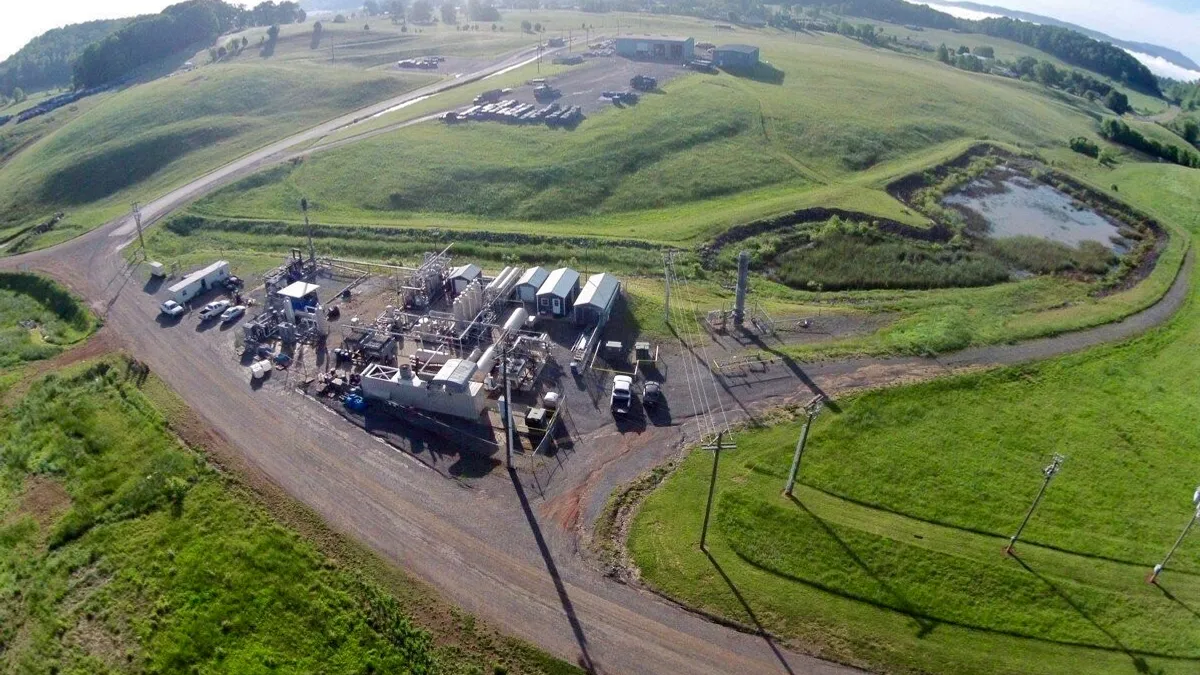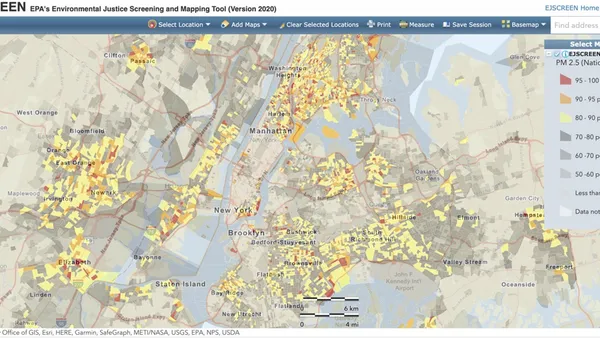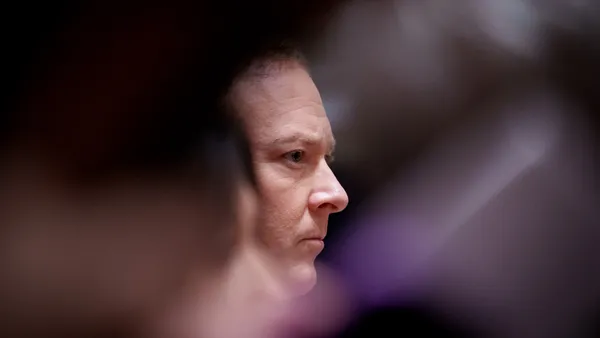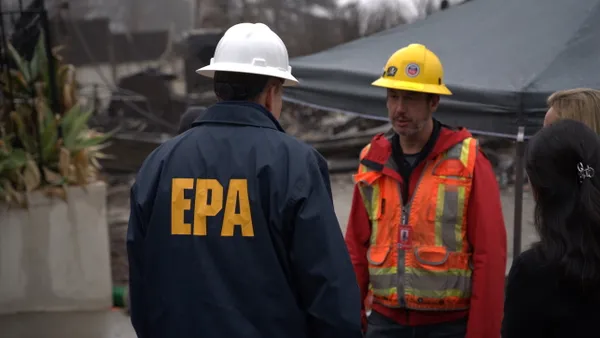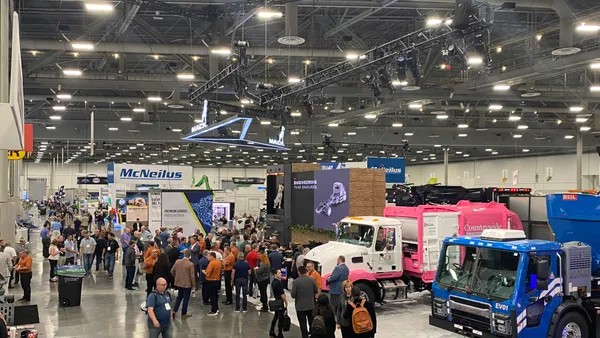The push toward creating renewable natural gas from waste has seen exponential growth in recent years. Based on recent investment trends, and projections that domestic RNG production could reach as much as 30 times current production over the coming years, it appears this sector is only just getting started.
The Coalition for Renewable Natural Gas, founded in 2011, represents the interests of companies investing in RNG systems throughout North America. Its membership includes large waste and recycling companies — many of which have significantly ramped up plans for new RNG facilities at their landfills within the past year or so — as well as the industry's largest anaerobic digestion operators and others in the space.
With an average cost of $17 million, these projects can take a variety of shapes, with third-party investors and operators eager to get involved. They can also benefit from regulatory structures at several levels of government, including the federal renewable fuel standard, dozens of state or provincial renewable portfolio standards and a smaller number of state low-carbon fuel standards.
RNG Coalition members share a bullish outlook for the industry and have set a sustainable methane abatement and recycling timeline, called SMART, to capture and control methane (a greenhouse gas far more potent than carbon dioxide) from more than 43,000 organic waste sites in North America by 2050. The timeline has benchmarks of 500 facilities by 2025, 1,000 by 2030 and 5,000 by 2040. Waste Dive recently spoke with the group's founder and CEO, Johannes Escudero, to learn more about what these growth plans will mean for the waste and recycling sector.
The following interview has been edited for length and clarity.
WASTE DIVE: There has been a lot of turbulence in the fuel market recently, given the Russia-Ukraine conflict. What do you think this could mean for domestic demand for RNG?
JOHANNES ESCUDERO: Any time there's loss of human life, it's extremely tragic, and I certainly wish we could prevent these circumstances from developing to begin with. But from an energy standpoint, I think you're seeing in Europe, and even here in North America, a realization that we have to do more with the domestic sources of energy that are available to us. In the EU, some of the headlines have been about an increasing dependence on biogas in order to move away from dependence on fossil fuels that might be imported from countries including Russia and others.
When you look at the growing population, the World Bank indicates waste is expected to increase by some 70% by the mid-century point. As long as our planet is populated by people, and as long as our families and our pets and our livestock are sustained by organic material — the banana peel, the orange rind, the apple core are going to end up somewhere. The pistachio shells get aggregated and disposed of somewhere. Wherever that is — whether it's a landfill, whether it's a digester, whether it's wastewater treatment processing facilities — inevitably that organic material breaks down and emits methane.
So the real question we should be asking ourselves is, what are we doing with the inevitable methane that is produced from the organic waste streams we as a society are responsible for? The value proposition that our membership represents is a no-regret solution. We are not just mitigating the harmful environmental impacts by capturing them. We're taking an additional step and converting that methane to a renewable source of fuel, heat and power for our vehicles, homes and businesses.
Regardless of the current market situation, we've already seen substantial investment in recent years. What will it look like for RNG to fill more of this fuel demand in the coming years?
We've made tremendous progress in the last almost 11 years, but the very first renewable natural gas project was actually built back in 1982 at the Fresh Kills Landfill on Staten Island, New York. That RNG production facility is still operating today and delivering renewable natural gas to thousands of satisfied customers in the Northeast.
Between 1982 and our founding in 2011, 30 years later, only 30 additional renewable natural gas facilities were developed. It partially explains why a lot of folks didn't know what renewable natural gas was — there just wasn't much of it to speak of. So we've played a significant role in changing that, not just in educating the general public, but elected officials and appointed regulators, too, and getting policy support.
From 2011 to 2015, the industry quadrupled that three-decade production average from one to four new facilities per year. So at our end-of-year conference in 2015, we then had 47 operating facilities.
A lot of folks outside the industry still weren't aware, but we were making inroads [such as passing] significant legislation in California that has now been fully implemented and will result in California's natural gas utilities procuring prescribed amounts of RNG by 2030. And at the federal level, in 2014 we were able to address regulation and gain eligibility for RNG feedstocks to not only generate renewable fuel into the RFS program, but generate cellulosic biofuel credits that would help to support the industry's growth and development.
In 2015, we challenged our industry to do more and double the number of operating facilities from 47 to 100 facilities by the year 2025. Folks thought that was aggressive, but we knew what our industry was capable of doing. We actually achieved our [original] 2025 objective five-and-a-half years ahead of schedule.
Some landfill operators already have active projects, but we've seen really heightened investment in the past year or so. What would you attribute that to?
I think there's a number of factors. I would also acknowledge that when we first began in 2011, almost 100% of our energy was coming from landfills. And with the advancement of policies, we were able to diversify feedstock to where now RNG is derived not just from landfill gas, but also from livestock agricultural waste (including manure), from wastewater treatment facilities, diverted organic waste, municipal solid waste, etc.
I think part of that is also a lot of those early RNG contracts were taking RNG to electricity generation, taking advantage of a variety of states' renewable portfolio standard programs — of which we now have 37 different varieties. But back in 2011, almost all of that was going to California, which had the most aggressive RPS at the time. So I think at the time, a lot of those RNG contracts were tied up under longer-term [power purchase agreements], 5-, 10-, 15-, 20-, 25-year agreements, some of these going back to the '80s.
Now, some of those contracts are coming offline or set to expire. So it's given the landfill gas rights owner — whether that's a municipality or whether it's privately held — an opportunity to look at what options might exist in the current market to maybe take that RNG to the transportation fuel space instead of the RPS markets. It's just increasingly difficult for RNG-to-power to compete with large-scale wind and solar, which are heavily subsidized and incentivized.
Since there are multiple types of facilities generating RNG from waste now, how does the coalition think about the ideal destination for, say, a banana peel? We sometimes still hear discussion about whether best outcome for that material would be at an anaerobic digestion facility versus a landfill with gas capture.
I think there's a case to be made for diversion of organic waste from landfills. I think the mistake is to send that organic waste to a compost facility. While you certainly can benefit from the production of soil amendments and fertilizers, you essentially forfeit any energy content from the methane that emits as that organic material breaks down. If you're diverting organic waste away from a landfill, it should be to a digester so that methane can be captured and converted for the best end use, which could vary depending on where that banana peel was discarded, where that digester is located, where the nearest prospective customers are and what their energy needs or demands are, and what the opportunity to decarbonize that energy consumption might be.
Another area that often comes up is transportation. There's a lot of existing interest in compressed natural gas fleets, but we're also seeing a greater push toward electrification. Do you view CNG as a bridge fuel, or do you think it has a long-term place in the market for waste vehicles?
If we're talking about best use of renewable natural gas today, there's certainly an argument to be made that it's in the transportation fuel space, especially if you're deriving RNG from methane that's been captured from feedstocks like dairy farms, where — absent an RNG collection system — that methane is going to vent or escape fugitively and directly to the atmosphere. When you use that fuel to then displace diesel, the effect of carbon sequestration and reduction of carbon intensity of that fuel is dramatic.
With respect to electrification, I want to be clear that we support electrification. We think there's an absolute role for it to play, including in the transportation fuel space. I happen to think that electrification makes the best sense today for light-duty passenger vehicles, particularly in metropolitan areas. There's a debate as to whether it makes much sense at all in the medium- and heavy-duty sectors or in more rural areas or for longer routes where, again, these commercial vehicles operate and transport their commodities.
I think we all know full electrification is going to take a lot of time. Reliability and cost-effectiveness are still a couple questions that are out there that fleets have to consider. In the meantime, the infrastructure to deploy increased volumes of renewable natural gas already exists today.
The International Energy Agency recognizes the role that RNG has to play as an essential, long-term clean energy because it can be used in a myriad of ways, including to produce renewable electricity, heat, fuel and renewable hydrogen too.
You mentioned how state and federal subsidies are still not at the same level for RNG as they are for other forms of energy. What policies are you advocating that you think would be more beneficial for RNG?
In addition to wind and solar, the oil and gas space still enjoys federal subsidies. Renewable natural gas does not. There is an investment tax credit that's available for using RNG for power, but as soon as you're upgrading biogas and injecting it into a pipeline to transport it interstate or intrastate for uses other than power, you're no longer eligible for those tax credits in place.
So we're absolutely committed to advancing our mission, which includes advocacy and education at the federal, state and provincial level. [That could mean] exploring more legislation that takes inventory of the RNG production potential as a prerequisite for additional policy that follows up to create a form of renewable natural gas standard or procurement requirement, or an LCFS- or RFS-type program.
We're fortunate to be advocating and educating for a mission that resonates with both sides of the aisle. For our friends on the blue side, they tend to fixate almost exclusively on the environmental benefits associated with RNG production. Methane capture and mitigation and emission avoidance are powerful. Then, with folks on the other side, who maybe are fixated on the economic impacts, RNG production facilities create more jobs per project than virtually every other [part of the energy] sector — including in the renewable energy and oil and gas spaces.
Our position from day one has always been that we support renewable natural gas produced from all feedstocks, using all competing technologies, for all sustainable and use applications. When we first began, almost 100% of RNG was going to power. Less than 20% is going to power today. Almost 80% of RNG is delivered in the transportation fuel space. That's not accidentally or coincidentally, that's a direct correlation to policies that we've been able to advance and market demand we've been able to help create.
Today, we're looking ahead at the opportunity for RNG to provide heat to buildings that are going to be difficult or impossible to electrify, taking RNG for sustainable aviation fuel and RNG for [liquid natural gas] bunkering in use for maritime applications, as well as a few examples on the horizon that represent enormous demand.
What's coming next with your SMART initiative, and what kind of untapped potential do you see for the waste market?
We have 250 operating renewable natural gas facilities in North America. In addition, we have 112 RNG projects that are under construction, and we have an additional 125 RNG projects that have already achieved significant development benchmarks. So we expect the industry to double in the next 18 to 24 months.
Our SMART initiative aims to capture and control methane from more than 43,000 organic waste sites across North America. So we're talking about close to 4,400 landfills; 19,000 large farms; 20,000 wastewater treatment plants, food waste lagoon facilities or agricultural operations; and about 140 million tons of food waste per year. And that's only expected to grow in the years ahead.
Of the projects we have under construction, 45% of those are at landfills. Of the projects that have completed substantial development, 70% of those are at landfills. When we began, it was almost exclusively landfill gas to RNG. As some of those longer-term [power purchase agreements] expire, we look forward to the opportunity to continue working and capturing and converting methane from landfills to other markets as the case may warrant.
A lot of the landfills you mentioned would be closed sites. What should the operators of an inactive landfill know about the potential opportunity there?
Depending on when that landfill closed, and how long it was open before it closed, in some cases there could be enough waste in place to generate methane emissions for 25 to up to 100 years. Some of the metrics are just going to depend on the amount of waste in place, the proximity to the nearest pipeline and/or customer and the availability of a virtual or mobile pipeline if an actual distribution system isn't nearby or cost-effective to tap into. But there is an enormous amount of methane out there that's still not being captured and converted. A lot of these closed landfills will represent lower-hanging fruit.



